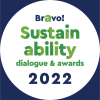Βραβείο 2021

Βραβείο 2022

Στρατηγικός συνεργάτης

Υποστηρικτές Επικοινωνίας


Open access article: https://genomicpress.kglmeridian.com/meridian/genomicpress/published/rest/pdf-watermark/v1/journals/brainmed/1/1/article-p31.pdf/watermark-pdf/
Abstract
The global surge in air pollution poses an increasingly concerning environmental risk factor for neurodevelopmental disorders, particularly autism spectrum disorder (ASD). Recent epidemiological studies have revealed compelling associations between exposure to specific air pollutants, including fine particulate matter (PM), nitrogen oxides (NO, NO2), sulfur dioxide (SO2) and ozone (O3), and increased ASD risk. While the rising global ASD prevalence, now affecting 1%–1.5% of the population, partially reflects expanded diagnostic criteria and enhanced screening, mounting evidence points to the critical role of gene–environment interactions in ASD etiology. Air pollutants can trigger multiple pathogenic mechanisms, including neuroinflammation, oxidative/nitrosative stress, epigenetic modifications, and glutamatergic/GABAergic neurotransmitter system disruption. The timing of exposure appears crucial, with heightened vulnerability during prenatal development and early childhood when critical neurodevelopmental processes, such as neuronal migration, synaptogenesis, and myelination occur. Research priorities should focus on how air pollutants affect brain development in genetically susceptible individuals, especially during pregnancy and early childhood. Better ways are needed to identify individuals at the highest risk and develop practical protective measures. Given the rising global pollution levels, this knowledge will help shape meaningful public health policies to protect future generations from environmental factors that may contribute to ASD.
Citation: Ojha SK, Amal H. Air pollution: an emerging risk factor for autism spectrum disorder. Brain Medicine. 2024;1(1):31–34. doi: 10.61373/bm024e.0115